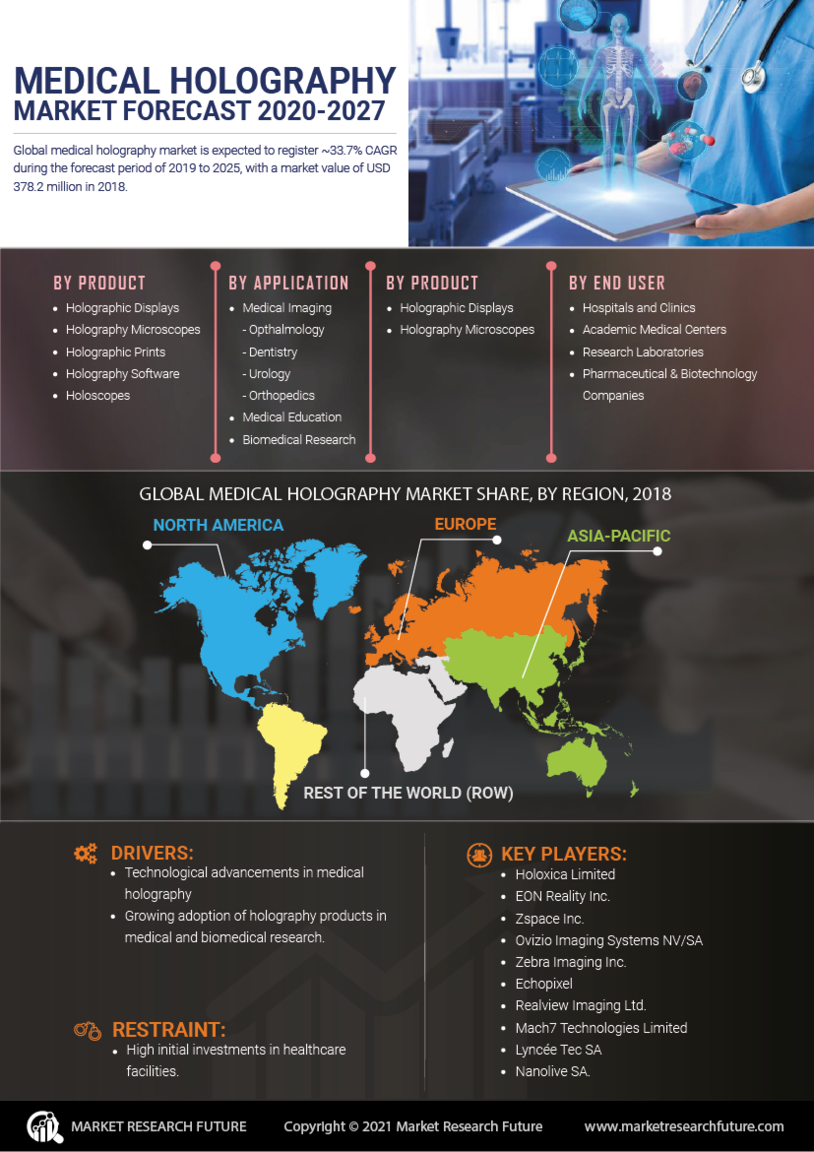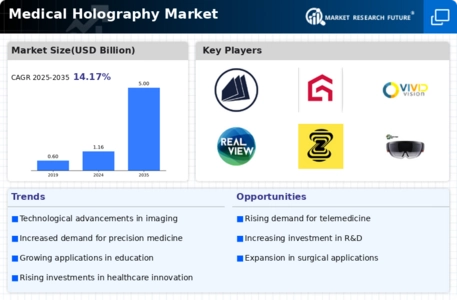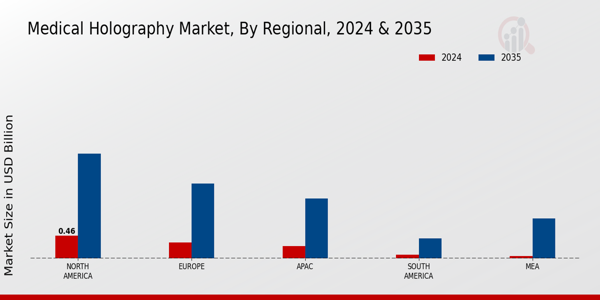Growing Focus on Patient-Centric Healthcare
The Medical Holography Market is aligned with the growing focus on patient-centric healthcare. Holographic imaging allows for personalized visualizations of patient data, which can enhance communication between healthcare providers and patients. By providing patients with a clearer understanding of their conditions through 3D representations, healthcare professionals can foster better engagement and adherence to treatment plans. This shift towards personalized care is likely to drive demand for holographic solutions that cater to individual patient needs. As healthcare systems increasingly prioritize patient involvement, the Medical Holography Market is expected to expand, reflecting the broader trend towards personalized medicine.
Rising Demand for Enhanced Medical Training
The Medical Holography Market is benefiting from a rising demand for enhanced medical training solutions. Holographic technology offers immersive training experiences that allow medical students and professionals to interact with 3D models of human anatomy. This hands-on approach can lead to better retention of knowledge and improved skills. Educational institutions are increasingly incorporating holographic simulations into their curricula, recognizing the potential for better-prepared graduates. The market for medical training tools is projected to grow substantially, with holography playing a pivotal role in shaping the future of medical education. This trend indicates a promising trajectory for the Medical Holography Market as it aligns with the evolving needs of medical training.
Increasing Applications in Surgical Procedures
The Medical Holography Market is witnessing an increase in applications within surgical procedures. Surgeons are increasingly utilizing holographic imaging to visualize patient anatomy in real-time, which enhances precision during operations. This technology allows for the overlay of holographic images onto the surgical field, providing critical information without obstructing the view. The ability to visualize complex structures in three dimensions is particularly advantageous in fields such as neurosurgery and orthopedics. As the adoption of holographic technology in operating rooms expands, the Medical Holography Market is expected to see significant growth, with estimates suggesting a market value reaching several billion dollars by the end of the decade.
Expansion of Research and Development Activities
The Medical Holography Market is experiencing an expansion in research and development activities. Academic institutions and private companies are investing in the exploration of new applications for holography in medicine. This includes research into novel imaging techniques and the development of user-friendly holographic devices. The increasing collaboration between technology firms and healthcare providers is likely to accelerate innovation in this field. As new applications are discovered and existing technologies are refined, the Medical Holography Market is poised for growth. The influx of funding into R&D is expected to yield breakthroughs that could redefine the capabilities of holographic imaging in clinical settings.
Technological Advancements in Imaging Techniques
The Medical Holography Market is experiencing a surge in technological advancements that enhance imaging techniques. Innovations in holographic imaging systems allow for more precise visualization of complex anatomical structures. This is particularly beneficial in surgical planning and education, where 3D representations can significantly improve understanding. The integration of artificial intelligence with holography is also on the rise, potentially leading to more accurate diagnostics and treatment planning. As these technologies evolve, they are likely to attract investment and research, further propelling the Medical Holography Market forward. The market is projected to grow at a compound annual growth rate of over 25% in the coming years, indicating a robust demand for these advanced imaging solutions.

















Leave a Comment